Crème brûlée may seem like an easy dessert to make, but even a small misstep can lead to a less-than-perfect result. How to mess up crème brûlée? It happens more often than you think! From curdled custard to a sugar topping that just won’t caramelize, there are plenty of pitfalls to avoid.
But don’t worry—this guide doesn’t just point out the mistakes; it helps you learn how to avoid them. Whether you’re a first-timer or a seasoned baker, these tips will save your crème brûlée from disaster. If you’re curious about mastering the perfect recipe, check out What is the Secret of Crème Brûlée? or experiment with a twist like the Crab Brulee Recipe.
Common Mistakes When Making Crème Brûlée
How to mess up crème brûlée? Making crème brûlée might seem straightforward, but several common mistakes can ruin the texture, flavor, or presentation. Here’s a breakdown of what can go wrong and why:
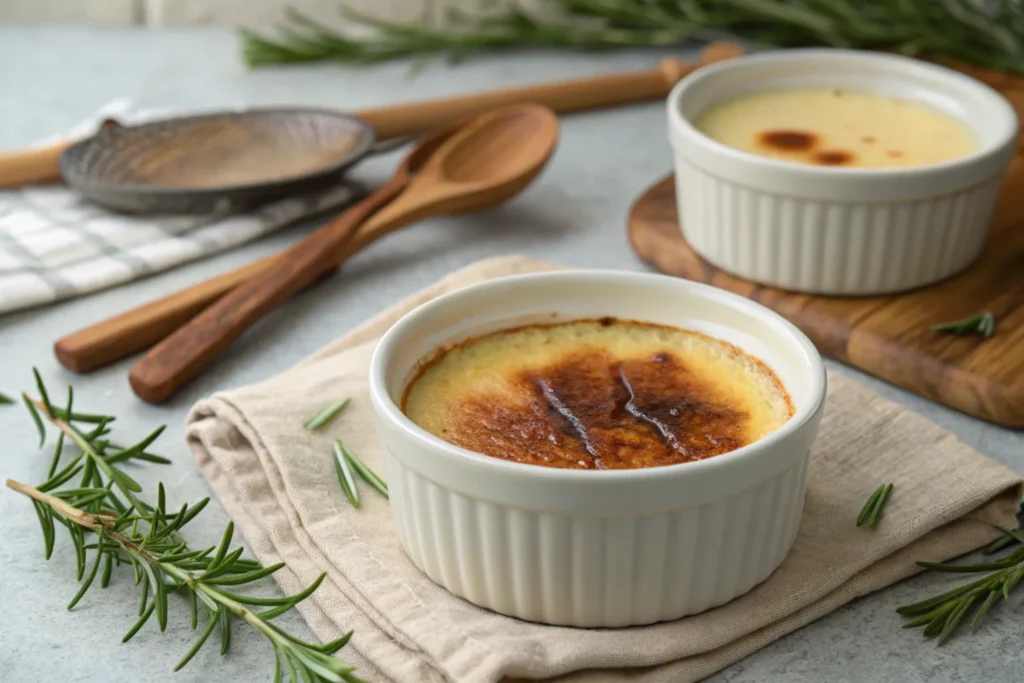
1. Overcooking the Custard
- What Happens: Overcooking results in a grainy, rubbery custard instead of the silky texture crème brûlée is known for.
- How to Avoid It: Bake at a low temperature (around 325°F) and remove the ramekins when the custard is just set but still jiggly in the center. Residual heat will finish the cooking process.
2. Skipping the Water Bath
- What Happens: Without a water bath (bain-marie), the custard cooks unevenly, leading to curdling or cracks on the surface.
- How to Avoid It: Always place your ramekins in a roasting pan filled with hot water, ensuring the water reaches halfway up the sides.
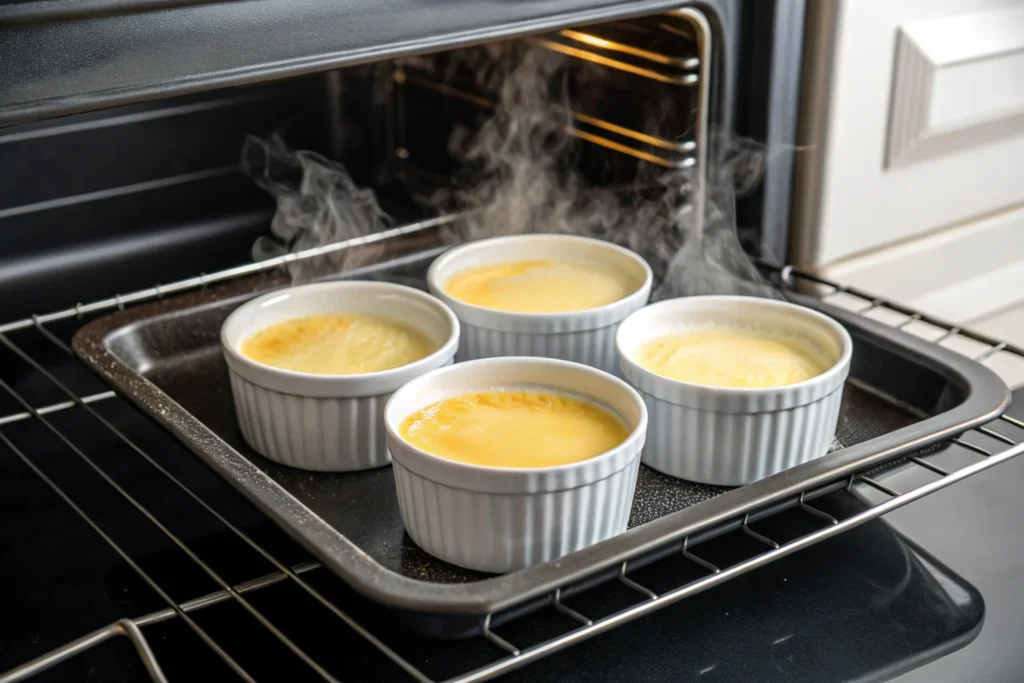
3. Using Too Much Sugar for the Topping
- What Happens: A thick layer of sugar takes too long to caramelize, resulting in a burnt crust or uneven caramelization.
- How to Avoid It: Sprinkle a thin, even layer of granulated sugar and use a kitchen torch to caramelize it quickly and evenly.
4. Not Straining the Custard Mixture
- What Happens: Unstrained custard can contain bits of cooked egg or bubbles, leading to a lumpy texture.
- How to Avoid It: Strain the mixture through a fine mesh sieve before pouring it into ramekins to ensure smoothness.
5. Inconsistent Caramelization
- What Happens: Uneven caramelization can result in a crust that’s either too soft or overly burnt.
- How to Avoid It: Move the kitchen torch in circular motions while caramelizing, keeping the flame a few inches away from the sugar.
6. Not Chilling the Custard Properly
- What Happens: If the custard isn’t chilled long enough, it won’t set properly, making it difficult to achieve the desired texture.
- How to Avoid It: Chill the baked custard in the refrigerator for at least 4 hours or overnight before caramelizing the sugar topping.
Unusual Ways Crème Brûlée Can Go Wrong
Beyond the common mistakes, there are some surprising ways your crème brûlée can go off track. These issues may not happen often, but they’re worth knowing to prevent any unexpected disappointments.
1. Using the Wrong Cream
- What Happens: Substituting heavy cream with low-fat alternatives like half-and-half or milk without proper adjustments can result in a custard that’s too thin or watery.
- How to Avoid It: Stick with heavy cream for the best texture, or learn how to adjust recipes when using substitutes like Milk in Crème Brûlée.
2. Overmixing the Custard
- What Happens: Mixing the custard too vigorously incorporates air, creating bubbles that can disrupt the smooth texture.
- How to Avoid It: Whisk the mixture gently until combined, avoiding excessive frothing.
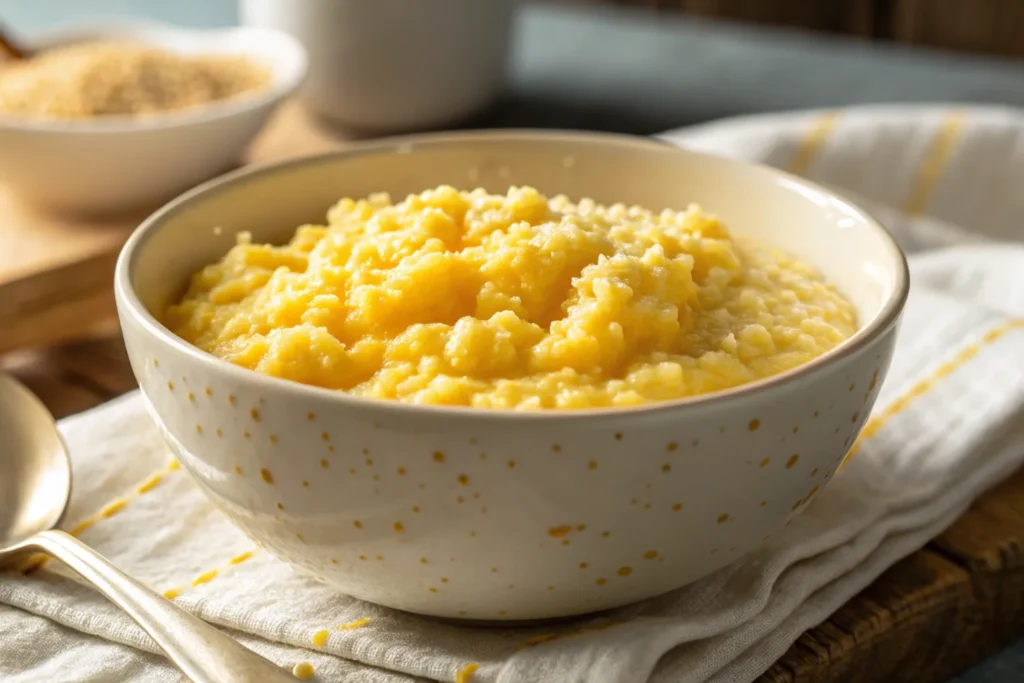
3. Caramelizing Sugar Too Far in Advance
- What Happens: If you caramelize the sugar topping too early, it may soften or weep, ruining the iconic crunch.
- How to Avoid It: Torch the sugar just before serving for the best texture and flavor.
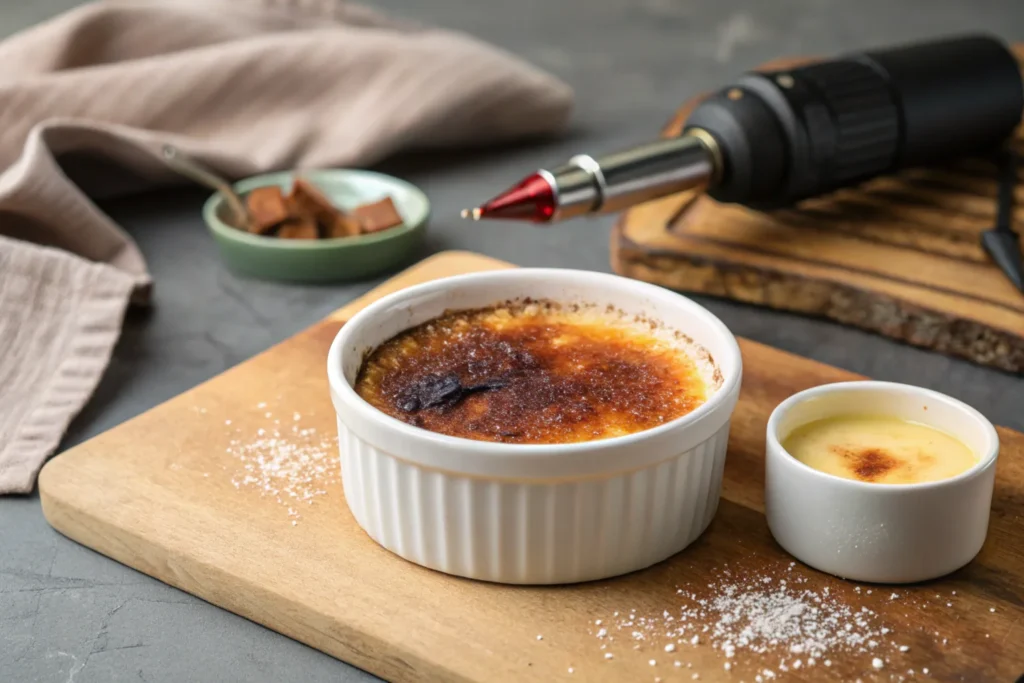
4. Adding Ingredients at the Wrong Time
- What Happens: Adding vanilla extract or sugar while the cream is too hot can lead to burnt flavors or uneven sweetness.
- How to Avoid It: Let the cream cool slightly before whisking in additional ingredients.
5. Skipping the Proper Cooling Time
- What Happens: Rushing to caramelize the sugar while the custard is still warm can cause it to melt, mixing with the custard instead of forming a crust.
- How to Avoid It: Ensure the custard is fully chilled before adding sugar and caramelizing.
6. Ignoring Your Torch Technique
- What Happens: Holding the torch too close or in one spot for too long can burn the sugar unevenly, creating bitter spots.
- How to Avoid It: Keep the torch moving in small, consistent circles and maintain a safe distance from the sugar.
How to Fix Common Crème Brûlée Issues
Even with the best intentions, things can go wrong when making crème brûlée. Fortunately, many common problems have simple fixes. Here’s how to troubleshoot and salvage your dessert:
1. Grainy or Curdled Custard
- What Went Wrong: Overcooking or baking at too high a temperature can cause the eggs to curdle.
- How to Fix It: Unfortunately, curdled custard can’t be fully salvaged, but you can use the mixture for another recipe like bread pudding. For next time, bake at a lower temperature and use a water bath.
2. Undercooked Custard
- What Went Wrong: Removing the custard from the oven too soon may leave it too runny in the center.
- How to Fix It: Return the ramekins to the oven and bake for a few extra minutes, keeping a close eye on the consistency.
3. Cracks on the Surface
- What Went Wrong: Skipping the water bath or sudden changes in temperature can cause cracks to form.
- How to Fix It: While cracks can’t be undone, they’re often hidden by the caramelized sugar topping. Next time, use a water bath and avoid abrupt cooling.
4. Soft Sugar Topping
- What Went Wrong: Caramelizing the sugar too far in advance or not enough heat can result in a soft topping.
- How to Fix It: Torch the sugar again right before serving to recrystallize the surface.
5. Bitter or Burnt Caramel
- What Went Wrong: Holding the torch too close or caramelizing the sugar unevenly can result in burnt spots.
- How to Fix It: Scrape off the burnt sugar and add a fresh layer. For next time, keep the torch moving in small circles.
6. Thin or Watery Custard
- What Went Wrong: Using low-fat cream or milk without adjustments can result in a custard that doesn’t set.
- How to Fix It: Next time, use heavy cream or add more egg yolks to thicken the mixture.
Pro Tip:
Always taste your crème brûlée before serving. If it’s salvageable but slightly off, consider adding a flavorful garnish like fresh fruit or whipped cream to enhance its presentation and taste.
FAQs: How to Mess Up Crème Brûlée
Yes, overmixing crème brûlée can incorporate too much air into the custard. This leads to bubbles on the surface and an uneven texture. To avoid this, whisk gently until the ingredients are just combined.
Crème-brûlée curdles when the custard is overcooked or baked at a high temperature. This causes the egg proteins to over-coagulate, resulting in a grainy texture. Always bake at a low, steady temperature in a water bath to prevent curdling.
If crème-brûlée doesn’t set, it’s often due to underbaking or an incorrect ratio of ingredients, such as too little egg yolk or heavy cream. Make sure to bake until the edges are set but the center is still slightly jiggly.
To scorch the sugar topping, sprinkle a thin, even layer of sugar on the chilled custard. Use a kitchen torch and move it in circular motions a few inches away from the surface until the sugar melts and turns golden brown.
Crème-brûlée can go wrong in several ways, including overcooking, skipping the water bath, or using the wrong cream. Mistakes like uneven caramelization or curdled custard are common but avoidable with proper technique.
Overcooked crème-brûlée will have a rubbery texture and may show cracks on the surface. Check for doneness by gently shaking the ramekin—if the edges are set but the center jiggles slightly, it’s ready.
Your crème brûlée turned into scrambled eggs because you cooked the custard at too high a temperature, which caused the eggs to curdle. Use a water bath and low heat to prevent this.
Conclusion
Crème brûlée may seem like a simple dessert, but there are plenty of ways to mess it up—from curdled custard to an uneven sugar topping. Understanding these common mistakes, and knowing how to fix them, is the key to mastering this classic treat.
With proper techniques like using a water bath, monitoring the baking time, and caramelizing the sugar just before serving, you can avoid disasters and ensure your crème brûlée turns out smooth, creamy, and perfectly topped every time.
Even if things go wrong, don’t be discouraged! Use the tips in this guide to troubleshoot your dessert and learn from each attempt. For more crème brûlée inspiration, check out What is the Secret of Crème Brûlée? or try something adventurous like the Crab Brulee Recipe.
Remember, the beauty of crème brûlée lies not just in its taste but in the joy of creating it. Happy baking!

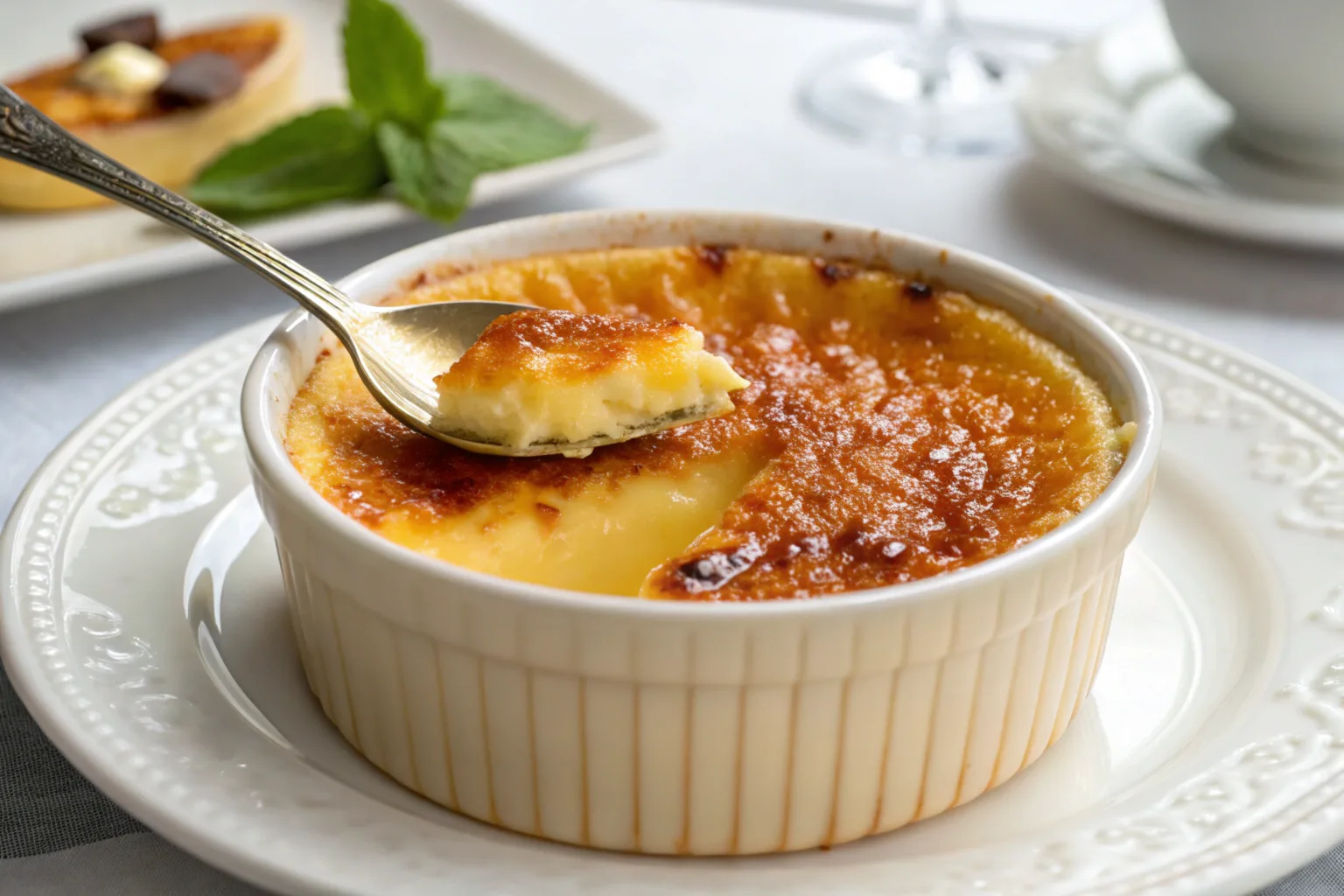
6 thoughts on “How to Mess Up Crème Brûlée: Common Mistakes and How to Avoid Them”
Comments are closed.